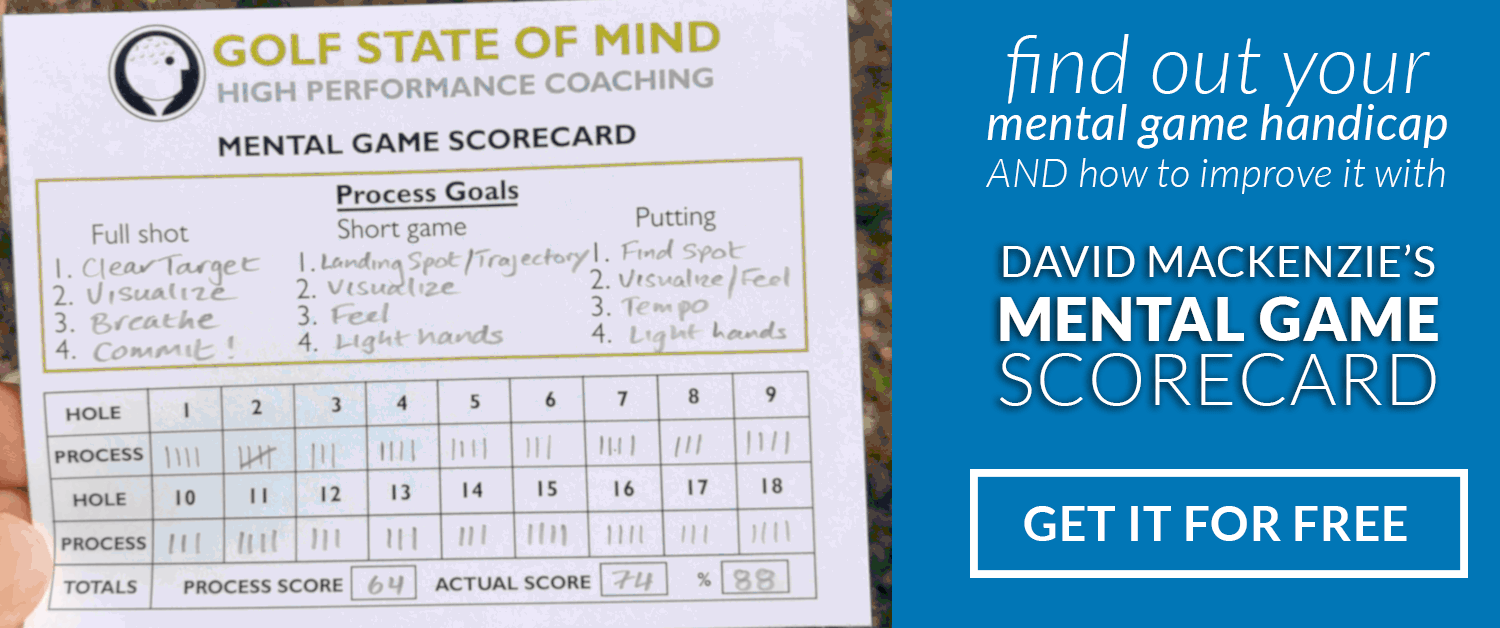
Who’s Driving Your Bus, part 2
Some golfers attempt to use mental techniques for golf such as occupying their attention when preparing to hit a golf ball by using repetitious mantras. But the very act of attempting to ‘block’ your non-conscious thoughts is one grounded in fear and trying to suppress what are perceived as ‘non-conscious involuntary responses’.
Play golf just like you would perform other life tasks
This is akin to a child putting his fingers in his ears and screaming “I can’t hear you” at its mother whilst she is talking, when he knows he can. I coach people to think and behave in golf using the same natural behaviors they use in their daily lives. If you are using different mental techniques for golf in order to perform better on the course compared to how you perform other life tasks, you have to ask why. You may believe reciting mantras whilst carrying out a life task is normal human behavior for you but it is not for me. It makes no sense to play golf if you spend all your time simply trying to ‘cope’ with the situation. In fact, I’d recommend finding a less stressful past time.
The Threat Of A Situation Is Based Upon Perception
Clearly in a life threatening situations, the non-conscious survival systems are essential in order to activate the flight or fight response we rely on in order to survive. Unfortunately, our body can’t differentiate from a real or “perceived” threat we like to make up on the golf course. However, it is an individuals CHOICE of how they perceive a non-life threatening situation, we don’t all react the same way. If we see a lion heading our way we certainly will but this is not the case in many other life situations, golf included. For example, 2 students may perceive a future examination very differently – 1 may be calm, the other anxious. The exam is not the cause of anxiety or both would always feel anxious. The individual does have a choice as how they perceive a situation and this is key to how to perform in the game of golf.
The future task (be it an exam or hitting a golf ball at a target) or it’s location in time is not the critical factor on or off the golf course. We have literally 1000’s of thoughts a day which exist in the future or past which do not create any sense of anxiety or fear so clearly time is not the critical factor in triggering an anxiety response. It is an individuals PERCEIVED control over the situation which determines how they respond, NOT the situation itself. This is important to understand.
Mental Techniques For Golf
Clearly you cannot directly correlate a future event with the anxiety response or you’ll be attempting to hit golf balls at a target whilst thinking about something else totally irrelevant to the task at hand like your swing, ball or humming a mantra. People look forward to going on vacation (the future) so you can certainly enjoy the challenge of hitting golf balls at targets anxiety free, when you feel in control of the situation. When the golfer understands the difference between focusing on their target rather than their desired outcome and focus on what they can control, the target provides a freedom to swing and putt free from conscious mind interference. This is HOW we perform all life skills.
It’s actually quite difficult trying to hit golf balls at a target and doing it accurately, so removing it from the golfers attention prior to executing a shot is literally like playing golf with a mental blindfold on. The consequence of technical swing thoughts is even more destructive, as they also destroy physical flow, and yet there’s an entire coaching industry unconsciously promoting the use of these very thoughts in their teaching methods, without understanding the consequences whilst learning, practicing or playing. It’s little wonder so many blame their ‘thinking’ for their poor golf.
Teaching golf below the neck and seeing the human as a-machine rather than an e-motion is very common but it is not teaching golf in our world of golf instruction, it is teaching people how to swing golf clubs efficiently. It is clear we have to learn how to use tools in order to carry out a task but we only perform a task when we stop thinking about using the tools. Think about how you ride a bike, drive a car or play an instrument and then think about how you try to play golf.
There is a piece missing from your golf instruction jigsaw puzzle but the good news is you can find it between your ears.


